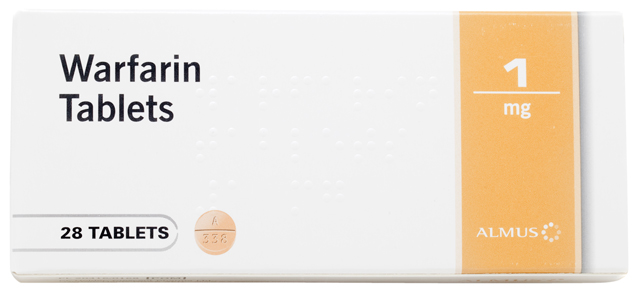Vitamin K: The Coagulation Vitamin

Did you ever wonder what the "K" stands for in vitamin K? It comes from the German word koagulations, which means coagulant in English. It is aptly named since vitamin K is a necessary component for blood clotting.(1)
Vitamin K works in conjunction with the enzyme γ-glutamyl carboxylase to modify certain proteins so they can bind to calcium. This process is called carboxylation, a crucial first step in the coagulation process.(2)
In coagulation, carboxylation converts clotting factors on proteins to gamma-carboxyglutamic acid (Gla). Once this is done, these proteins are able to bind calcium to themselves. This then triggers a series of events called the coagulation cascade that stop bleeding by forming clots.(4, 31)
An equally important role for vitamin K is to activate anticoagulant proteins to control clotting, since uncontrolled clotting can be just as dangerous as uncontrolled bleeding.(1, 4)
Known vitamin K-dependent proteins involved in coagulation include:(1, 4, 22)
| Clotting Factors | Function |
|---|---|
|
II (prothrombin) |
Core proteins for the coagulation cascade. |
|
VII (proconvertin) |
|
|
IX (Christmas factor or plasma thromboplastin component) |
|
|
X (Stuart-Prower factor) |
|
| Z |
Enhances association of vitamin K activated prothrombin (called thrombin) with cell membranes phospholipids; anticoagulation function. |
| C |
Anticoagulant protein to control coagulation. |
| S |
Anticoagulant protein to control coagulation. |
All of these proteins are made in the liver. Severe liver disease can cause deficiencies in these clotting proteins, increasing the risk of uncontrolled bleeding. Anticoagulant drugs used to prevent blockages in blood vessels (for people at risk of unhealthy clot formation) are also a common cause of bleeding problems. Vitamin K is often used to counteract or stabilize these effects.(4, 6)
Vitamin K and Anticoagulant Drugs
Clots that form in blood vessels can break off and block arteries, which can cause heart attacks, strokes, or pulmonary embolisms. Patients at risk of forming these clots are often prescribed blood-thinning or anticoagulant drugs (e.g., coumarin and warfarin) which interact with enzymes and inhibit the natural regeneration of vitamin K. Conversely, increasing the availability of vitamin K can inhibit the effects of these anticoagulants.(1, 4, 22)
How Do Anticoagulant Drugs Work
The body has limited ability to store vitamin K, and it is quickly depleted without regular replenishment in the diet. However, the body adjusts to this dwindling resource by recycling some vitamin K for re-use. In a process called the vitamin K cycle, a small amount of vitamin K can be used repeatedly to carboxylate dependent proteins.(4)
The anticoagulant drug warfarin prevents this recycling and reduces vitamin K levels. Without enough vitamin K, not enough vitamin K-dependent coagulation proteins are carboxylated. In turn this inhibits the coagulation cascade and blocks clot formation.(4, 6)
Too much vitamin K can overcome warfarin's anticoagulant effects, which can lead to potentially deadly clots. Conversely, too little vitamin K with warfarin use can cause severe bleeding. This is a common concern for people taking anticoagulant medication (especially in elderly patients).(4, 6)
Stabilizing the Effects of Warfarin with Vitamin K
Anticoagulant drugs have been commonly used for over 50 years. Even so, it's still difficult to maintain a proper balance between anti-clotting drugs and preserving enough vitamin K to prevent serious bleeding. Experts recommend 90-120 µg/day of dietary vitamin K for patients on drugs like warfarin.(4, 6)
Doctors use the Prothrombin time (PT) test to evaluate if blood is clotting properly. In case of unexplained bleeding/clotting an activated Partial Thromblastin Time test (aPTT) is used. Results are typically standardized to the International Normalized Ratio (INR). Doctors look for patients on anticoagulant drugs to have an INR between 2.0 and 3.0 (or 2.5-3.5 for those with a particularly high risk of clot formation). These INR ranges are difficult to maintain for many patients.(6, 63)
Changing Diet May Work Better than Changing Drug Doses
Results of one clinical study suggest that regulating dietary intake of vitamin K could help patients achieve better control without changing drug doses. Participants in the study were broken into two groups:(6)
- Conventional anticoagulant drug therapy by itself
- Drug therapy with modulation of vitamin K levels in the diet
Most patients used warfarin, but 15% used the drug phenprocoumon.(6)
Trained nurses evaluated patients' diets and instructed them how to adjust their intake of specific vitamin K-rich foods. Patients were reassessed for INR status at regular intervals over 90 days, and their diet was adjusted as necessary. The group using the drugs only was also evaluated for INR and instructed to decrease or increase oral medication as necessary.(6)
In the short-term there did not appear to be any differences between the 2 groups. However, within 90 days 74% of patients working with their dietary vitamin K intake were able to reach their targeted INR range, compared to only 58% of drug-only therapy patients.(6)
In addition, 11% of the conventionally treated group had incidents of minor bleeding, while the combined diet-drug group had none. One patient in the diet group did have to receive intravenous vitamin K. This was because of asymptomatic elevated INR (to counteract excessive blood thinning).(6)
Steady and Higher Intake of Vitamin K Beneficial
The study's authors stress that the key is to balance vitamin K intake. This does not necessarily mean reducing dietary vitamin K but to be conscious of maintaining a steady amount - even after INR has been achieved.(6)
In fact, unstable INR is more common in patients who take warfarin and have chronically low levels of vitamin K in their diet. Experts speculate that patients with low intake are so depleted that ingesting even a small amount of vitamin K can cause erratic fluctuations in clotting factors.(1)
Results of clinical studies on taking vitamin K supplements (rather than dietary intake) and INR stability are conflicting. However, experts recommend long-term warfarin patients who have unexplained unstable INR take 100-200 µg/day of vitamin K. They also caution that patients beginning vitamin K supplements should be closely monitored. This is so adjustments to warfarin dosages can be made as needed.(1)
Vitamin K and Pre-Surgery Planning for Warfarin Patients
When patients on anticoagulant therapy require surgery, there is a particular concern about excess bleeding. Doctors usually delay surgery in order to lower levels of anticoagulants in the blood to reduce this risk. Typically patients may need to achieve an INR of below 1.5.(64)
In a clinical study, 45 patients needing surgery for hip fractures were given 1 mg of intravenous vitamin K in addition to stopping warfarin medication. The time needed to achieve an INR of below 1.5 was significantly reduced in the treated group, without any adverse effects.(64)
However, oral doses of vitamin K may not exert as potent an effect. In a randomized clinical trial, 64 patients were taken off warfarin and given either heparin bridge therapy or 1 mg of vitamin K in an effort to reduce INR to below 1.5. This was done within five days prior to scheduled surgery. Only 34% of those in the vitamin K-treated group were able to achieve that INR level. This suggests that oral ingestion of vitamin K - at least at this dosage level - could not reduce the effects of anticoagulant drugs in a short time period prior to surgery.(65)
Preventing or Treating Hypoprothrombinemia with Vitamin K
Hypoprothrombinemia is a blood clotting disorder. It is most commonly caused by vitamin K deficiency, severe liver disease, and/or use of anticoagulant drugs, but in rare cases it can be an inherited disorder. Vitamin K deficiency is typically due to:(66)
- Bile duct obstruction in the liver, which can lead to malabsorption of nutrients in the intestines.
- Long term antibiotic use.
Intravenous or oral administration of vitamin K1 can prevent and treat hypoprothrombinemia caused by vitamin K deficiency.(1)




